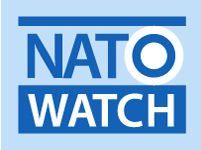By Nigel Chamberlain, NATO Watch
Anders Fogh Rasmussen sees the end of the Afghan operation as an opportunity for bigger things to come for the NATO alliance. Having outlined a near global ‘Arc of Crises’ (an advance on Churchill’s ‘Iron Curtain’ thesis?) at the recent Munich Security Conference, the Secretary General said “we must stand ready to deter, and defend against, any threat”.
His theme was based on the ‘capabilities, capabilities, capabilities’ mantra with particular focus on missile defence, cyber defence, and special forces.
Vision 1: European navies upgrading their ships with missile defence radars and interceptors so they can deploy alongside United States vessels.
Vision 2: Allies defining a common approach to the threat of cyber attack.
Vision 3: Improving the capability of special operations forces in planning and coordinating missions.
He somewhat optimistically envisions the military funding gap, caused by the world economic downturn, being bolstered by reinvesting “the ISAF dividend in defence” while the “NATO Response Force should become the engine of our future readiness”. To achieve this objective, he calls for more coordination with operational partners, the United Nations and the European Union, even Russia.
But Europe will have to do more “because a strong European contribution to NATO’s capabilities will sustain a strong US commitment to NATO”, especially if NATO is going to be involved in what used to be called ‘out-of-area operations’ but is now referred to as “beyond the Euro-Atlantic area”.
Further reading: see our reports on the opening of the new Special Forces HQ in Belgium in December 2012 and a NATO Special Forces exercise in Tampa, Florida in June 2012.
